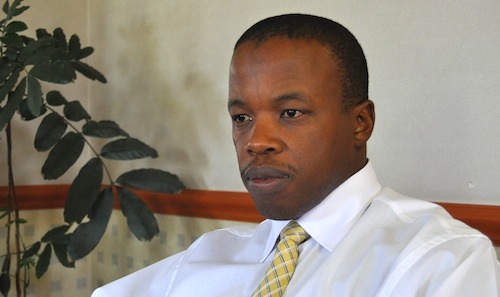
Sentech looks set to close loss-making divisions, including its once much-vaunted telecommunications carrier-of-carriers division and its direct-to-home satellite television business, to focus on its core business of signal distribution.
That’s according to Setumo Mohapi, Sentech‘s new CEO, who was speaking to TechCentral exclusively in his first media interview since taking office on Monday.
The decision to close the carrier-of-carriers business represents a big change of heart for Sentech, which had been given a special licence about seven years ago to take on incumbent Telkom in providing wholesale international connectivity to other operators.
Under a plan hatched by former communications minister Ivy Matsepe-Casaburri, Sentech was given two powerful telecoms licences — the carrier-of-carriers licence and a multimedia services licence — meant to position it as a direct competitor to Telkom.
Sentech used the multimedia licence to build a retail broadband network called MyWireless, which it pulled the plug on last year. Now it’s set to ditch the carrier-of-carriers business, too, because cutthroat competition means its struggling to make a profit.
Mohapi says it was a mistake for Sentech to get into the retail consumer market and it won’t do so again.
Sentech is also keen to get out of its direct-to-home satellite business, called Vivid. This business was originally meant as a rival to MultiChoice’s DStv, but failed to get off the ground. It’s believed to have fewer than 70 000 customers.
Other businesses that may face the axe include its VSat (satellite communications) operation. It’s already pulled the plug on its BizNet corporate wireless services division.
Though it’s closing many of its nonperforming and noncore divisions, Sentech still wants to revive its plans to build a national broadband network.
This, Mohapi says, will provide wholesale broadband access to third-party service providers, who will then on-sell those services to the general public.
Sentech is finalising the business plan for this network, which may be based on WiMax technology.
He says the business must be self-sustaining, and mustn’t be dependent on Sentech going to government for funding.
“You have to be flexible and business minded and look at partnerships,” he says. “And you have to know what your role is. You can’t be everything to everyone.”
Mohapi admits that Sentech has big problems that need to be sorted out — not least among them a multimillion-rand lawsuit from set-top box manufacturer Altech UEC and allegations of fraud involving former top managers.
But he says these are “legacy issues” and he’s keen to focus on what the company will do in the future.
He says he wants to attract talent back to Sentech and position it as an innovator in the industry. He also wants to improve the company’s customer service levels.
“We need to think like a business, understand our customers’ businesses, and be proactive in what we provide to them,” he says.
On the contentious issue of digital terrestrial television standards, which is threatening to hold up SA’s migration from analogue to digital broadcasting, Mohapi says changing from the European standard to a hybrid Japanese-Brazilian standard would “complicate things” given how far down the line Sentech is with its roll-out of digital television. But he says it’s a policy decision and so is largely out of his hands. — Duncan McLeod, TechCentral
- Subscribe to our free daily newsletter
- Follow us on Twitter or on Facebook




